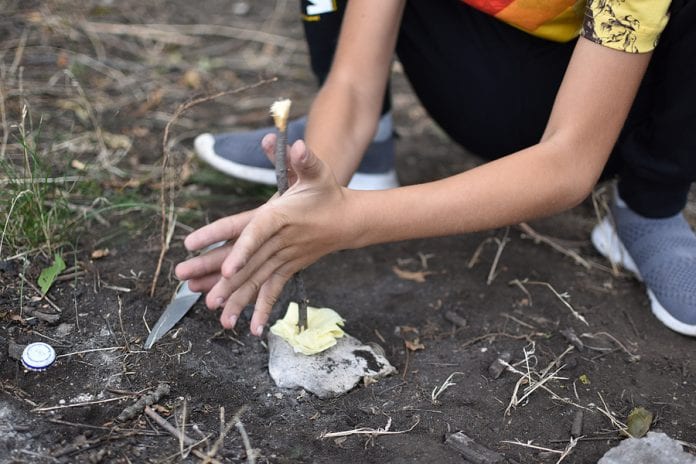The phrase “hope for the best but prepare for the worst” could be considered one of the mantras of the prepper. Emergency situations and various disasters could strike at any time, especially when you are out in the wild on your own. Getting lost and wandering into unfamiliar territory without the proper tools or ending up in extreme conditions without warning puts you in a risky situation, and if you didn’t have time to prepare for it, you could find yourself in danger of illness, injury or worse. In this article, you’ll learn a few crucial survival skills you should know should you find yourself up the river without a paddle—or any other tools, for that matter.
Table of Contents
1. Building a Fire
Being able to build a fire is one of the most crucial survival skills as it gives you light, heat, a way to cook your food and an easier method to purify water. You can prepare for the need to start a fire by taking with you matches, a lighter, firesteel or any other fire-starting tools. If you have none available, learning how to create fire with friction is something to learn.
2. Building a Shelter
If you find yourself lost overnight, you’ll need something to bunk down in until you are rescued. Carrying a tarp in your pack is recommended if you can’t fit a tent, as it could be a livesaver in cold situations where you need to be protected from wind and rain. Should you lose your bag with the tarp in it, you should know how to create a shelter that blocks all of the elements around you from materials in the wild.
3. Locating and Purifying Water
Water is life, and without it, dehydration could pose a dangerous risk in the wild. You’ll need to know how to find headwater streams, springs or even morning dew to ensure you’re getting your H2O. Follow water by looking for grazing animals or listening for flowing rivers or even collect rainwater. Avoid stagnant water, and boil any other source of water you find before consuming.
4. Finding Food
Knowing which foods are safe to eat when you’re stranded in the wild will help you keep up your energy. Look for safe plants and berries, but be sure you can identify them with confidence before consumption lest you ingest poison. You can also eat acorns from oak trees and nuts and inner bark from pine trees. If you don’t want to take your chances, you could also fish or hunt small animals with a snare trap.
5. Self-Defense
It’s impossible to tell what sort of animals you might come across in the wild, and knowing how to fashion crude weapons, such as sharpened sticks, clubs or branches, and how to use them in the event of an attack is crucial. Do not run from any animals; instead, face them and back away from it slowly. If you are attacked, try to go for its eyes and snout to temporarily disable it, so you can leave and find shelter.
6. Understand Paracord Knots
Finally, paracord is one of the most important survival tools to keep with you on your trek. Its strong nylon allows it to accomplish a number of tasks like creating shelter, making a bow, creating fishing lines, building a ladder and more. It can also hold up to 550 pounds of weight if you need to create a hammock to safely sleep in off of the ground.
By getting familiar with these skills before you head out into the wilderness next time, you’ll be better prepared to handle whatever unexpected obstacles fall into your path.


















